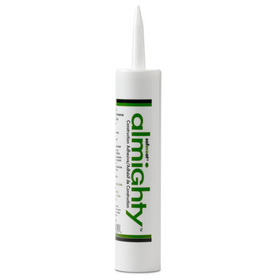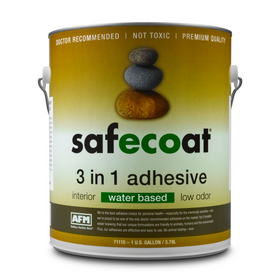
How to Renovate Your Home Sustainably
Last Updated: Mar 28, 2025According to the most recent US Census, an estimated 1,380,300 housing units were started in 2020. This volume of new home starts was 7 percent higher than in 2019. Even during a global pandemic and massive economic crisis, it looks like the new home construction market will continue to grow in the coming years. Building new homes, however, can come with a sizeable environmental footprint. Even with the best energy-efficient construction methods, the embodied energy footprint that stems from the raw materials that go into a home can take years to offset. A landmark report titled "The Greenest Building: Quantifying the Environmental Value of Building Reuse" determined that replacing an older, less energy-efficient home with a new high-performance home will take an average of 80 years to offset the ecological impact of new construction.
Though there are certainly times when new home construction is warranted, renovation tends to be the more environmentally friendly option. A leading architect confirms that "the greenest building is the one already standing in most cases." Of course, there is a sizeable difference between investing in a low carbon retrofit to improve your older home's energy efficiency and adding a poorly insulated 1,000 square foot addition that will drive up your energy bills by 50 percent or more. As a general rule of thumb, sustainable home renovations and retrofits aim to create healthier and more energy-efficient spaces.
Table of Contents
- Defining YOUR Sustainability Goals
- Why Focus on Health in a Sustainable Home Renovation?
- Can Mechanical Ventilation Improve Your Home's Health?
- Why Are Low VOC or Zero VOC Products Important For Your Health?
- Can Investing in Plants Improve Your Home's Health?
- Sustainable Home Renovation Strategies for Lower Utility Bills
- Do Programmable Thermostats Save You Money?
- Can Low Flow Water Fixtures and Leak Sensors Save You Money?
- Sustainable Home Renovation Strategies for Lowering your Home's Environmental Impact
- Why Invest in Renewable Energy?
- Who Should Consider a Passive House Retrofit?
- Why Choose Recycled and Salvaged Building Materials?
- Can Local Building Materials Reduce Your Footprint?

Defining YOUR Sustainability Goals
There is no sacred guidebook or set of rules that govern how to renovate your home sustainably. Rather, examining your personal goals, objectives, and ambitions for improving your home should be the starting point for any major home renovation. Perhaps you want a home that can deliver the purest indoor air quality with a minimum of volatile organic compounds (VOCs) that could impact your health. Maybe your growing environmental awareness is pushing you to invest in energy efficiency upgrades or renewable energy technologies to lower your carbon footprint. Or perhaps you want to invest in the latest energy-efficient technologies and appliances to help reduce your monthly energy bills.
Your guiding priority for a significant home renovation could be health, wealth, or planet-focused. It is essential to understand that these priorities will differ from person to person. This short article will look at various home renovation strategies that are driven by these three aspects. We will offer a few ideas and suggestions for how homeowners can renovate their homes for improved healthfulness, lower energy and utility bills, or lower environmental impact.

Why Focus on Health in a Sustainable Home Renovation?
On average, Americans spend ninety percent of their time indoors, mostly spent inside the homes where they live. The air inside homes often has concentrations of some pollutants 2 to 5 times higher than typical outdoor concentrations. Many people might think that high concentrations of indoor air pollutants were a problem of the past - when asbestos was still found in insulation, and lead paints were standard. Those practices have thankfully disappeared due to increased regulation. However, the Environmental Protection Agency (EPA) finds that concentrations of indoor pollutants have actually risen in recent decades. This increase is due to a variety of factors, including:
- Energy-efficient building construction without adequate ventilation or air exchange
- the rise in use of synthetic building materials, personal care products, and furnishings
- pesticides, and
- household cleaners
Perhaps somewhat ironically, the more airtight building envelopes that lower our energy bills and make our homes more environmentally friendly might also be leading to a worsened interior environment. Fortunately, airtight building envelopes and other essential aspects of sustainable and energy-efficient construction don't necessarily have to lead to bad indoor air quality. For homeowners interested in improving their homes' health, here are a few of the leading renovation strategies focused on health and wellbeing.

Can Mechanical Ventilation Improve Your Home's Health?
If you are fortunate enough to have an energy-efficient building shell, mechanical ventilation is an essential part of supplying your home with a steady supply of fresh air without compromising on energy efficiency. Heat recovery ventilator (HRV) mechanical ventilation draws the stale air from inside your home and replaces it with fresh air from outside your home. During the winter, an HRV's heat exchange core transfers heat from the outgoing stale air stream to heat the incoming air stream so that you're not blowing cold air into your heated home. Energy recovery ventilators (ERVs) work similarly, but they can also regulate the humidity while giving you fresh air. You can read more about the difference between HRV and ERV technology here.

Why Are Low VOC or Zero VOC Products Important For Your Health?
Whether you are painting your home, installing new cabinets, or redoing your baseboards in the kitchen, prioritizing low VOC or zero VOC products is essential for healthy indoor air quality. VOCs lurk in many places. You can find high levels in your paint, in engineered wood products, in plastics and other synthetic materials in your furniture and bedding, and in textiles that contain certain types of flame retardants. You can read more about where formaldehyde, one of the most common (and potentially dangerous) VOCs, might be lurking in your home here. For healthy home interiors, look for low-VOC paints and engineered wood products free of added formaldehyde.

Can Investing in Plants Improve Your Home's Health?
One of the best things you can do to improve your home interior's healthfulness and aesthetics is to invest in plants for your home. Via transpiration, many plants can regulate the humidity levels inside your home. Some plants can even purify your home air and get rid of certain types of VOCs. Check out these articles for ideas on incorporating moss walls, the best air purifying plants, and living walls in your home. In addition to these benefits, plants just make us happy! Learn about all about this in our article on biophilic design.
Sustainable Home Renovation Strategies for Lower Utility Bills
According to one recent analysis, the average American homeowner spends $111 for electricity, $72 for natural gas, $70 for water, $14 for garbage and recycling, $85 for cable, and $60 for internet each month. Those average utility bills add up to well over $400 each month, which is most likely a significant part of your paycheck. Do you feel that too much of your salary is going to pay your utility bills each month? If so, consider implementing home renovation strategies that focus on lowering these bills.
Fortunately, most of these "wealth-focused" renovation strategies also help improve your home's energy efficiency. Though they might require an initial upfront investment, the renovation strategies outlined below have relatively short payback periods to quickly help you start saving money. More expensive home renovations focused on lowering energy use are discussed in the next section on renovations for reducing your home's environmental impact.

Conduct an Energy Audit
Have an energy audit done by a qualified professional to find out where you stand. They can tell you how much insulation is in your walls, basement, and attic and what you can do to seal up all your leaks. This audit can give you a jumping-off point to plan your renovation and map out your end goals.
Insulate
Most homes are under-insulated. Levels of insulation vary greatly depending on when your home was built and your region. Use the results of your energy audit to prioritize where to start. With so many different types of insulation available, you'll want to refer to our handy insulation round-up article to guide you along the way.
Weatherstripping For Your Home
Weatherstripping kits will probably only cost you $15 to $20 at your local hardware store. However, by sealing air leaks around windows, doors, and other parts of your home, you can get rid of those uncomfortable drafts and quickly lower your heating and cooling bills.

Can Low Flow Water Fixtures and Leak Sensors Save You Money?
Low-flow showerheads can reduce your water usage by 40 percent or more. Ultra high-efficiency toilets use only a quarter of the water per flush when compared to standard toilets. And smart water leak detectors can help you save major money from leaks that would otherwise go detected. If you pay over $50 per month on water, these simple upgrades should quickly help drive down that cost.
Sustainable Home Renovation Strategies for Lowering your Home's Environmental Impact
Home renovation strategies can also focus on lowering your home's environmental impact. These strategies generally focus on two different areas:
- Improving the home's operational efficiency via renewable energies, and energy-efficient technologies, and building practices, and
- lowering the embodied energy footprint of the materials used in the renovation itself.
Why Invest in Renewable Energy?
Installing solar panels, wind turbines, or even a small household hydro plant can allow homeowners to drastically reduce and even eliminate the greenhouse gas emissions associated with operating their homes. A major renewable energy project will cost you a sizeable upfront investment. However, it will pay for itself over the lifespan of the project.
Who Should Consider a Passive House Retrofit?
The best way to lower your home's operational carbon footprint is by opting for a passive house retrofit and achieve EnerPHit certification. These in-depth renovations start with a rigorous assessment by an energy advisor to determine where your home is "leaking" energy. The upgrades themselves might focus on improving the airtightness of your home's building envelope, investing in high-efficiency windows and insulation, updating your HVAC equipment to a heat pump, among other strategies.

Why Choose Recycled and Salvaged Building Materials?
Whether you want to replace the carpeting in your living room with hardwood flooring or install new cabinetry, you can find recycled and salvaged building products for your home renovation project. Recycled wood is not only beautiful and adds character to a home, but it also continues to lock up carbon and reduces demand for further logging of existing forests.
Can Local Building Materials Reduce Your Footprint?
No matter what direction your renovation goes, you can always make an effort to find local building materials. Prioritizing local materials can help stimulate your local economy while also lowering the building project's embodied energy footprint. Check out this Rise guide for finding local building materials for your next renovation project!
Tobias Roberts
Tobias runs an agroecology farm and a natural building collective in the mountains of El Salvador. He specializes in earthen construction methods and uses permaculture design methods to integrate structures into the sustainability of the landscape.














